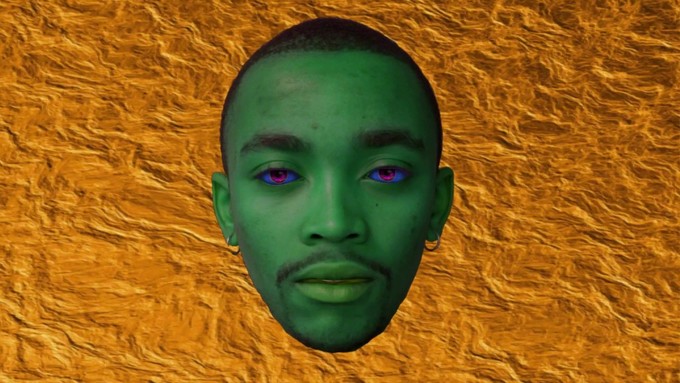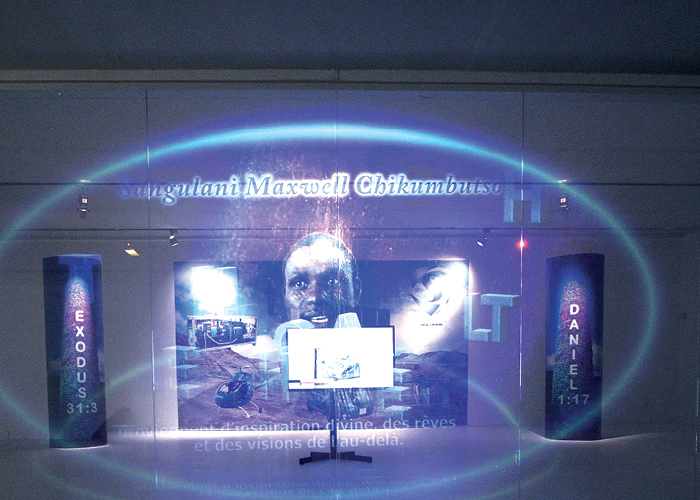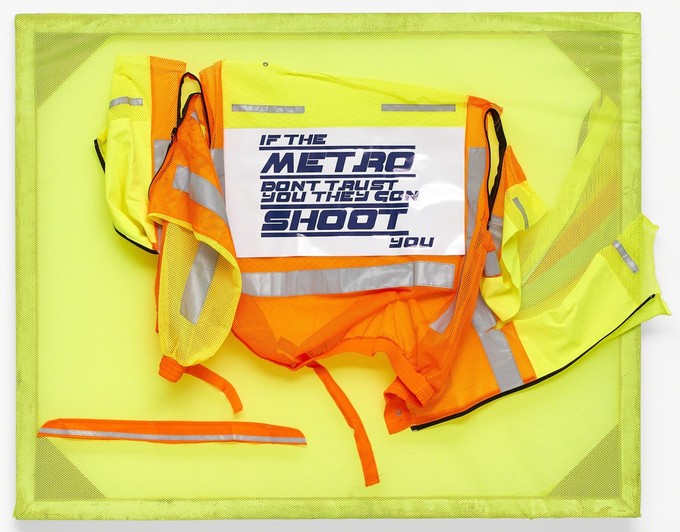The latest in a series of interviews with artists who have a significant body of work that makes use of or responds to network culture and digital technologies.
Aria Dean: I read in an interview that you felt that Afrofuturism had long ago reached the limit of its usefulness. I’m interested in this claim considering the visual language of your work—which, like Afrofuturism, appears to highlight blackness, technology, and science fiction. Can you speak a bit about this refusal of Afrofuturism? If not Afrofuturism, what are you looking toward?
Bogosi Sekhukhuni: Afrofuturism leaves a bad taste in my mouth. I’m petty, firstly I have an issue with the “afro” prefix, which quietly suggests that in futurism there is no afro to begin with?
That there are shared goals and concerns between afro-futurism and the direction of my practice, is very much true. Such as the desire to study and interpret the past in order to understand the present and to project visions of a Afroic future. Afrofuturists aren't the only people doing this. I find that there is an Atlantean false light diasporan lense to African history and culture that I don't relate to. And this lense also seems to direct where the conversation goes.
I do look towards the writings of people like Marimba Ani and the lengths she goes to present a clear Afroic critique of western ways of thinking and I don’t quite know how to to explain this tone/attitude/lense yet but yeah.
People often refer to Toni Morrison’s thought experiment which sees Africans who were part of the transatlantic slave trade as being the first moderns. The very idea of the modern man can’t be the presupposed reality.
I’ve been harsh on Afrofuturism in the past mainly because I feel it’s a lazy way to read my work.

2-channel video installation
 AD: Can you talk a bit about your relationship to what might be named “black aesthetics” in general? How do you view your work, particularly when it comes to articulating a black aesthetic versus—or in tandem with—an African—or even more specifically, South African—aesthetic?
AD: Can you talk a bit about your relationship to what might be named “black aesthetics” in general? How do you view your work, particularly when it comes to articulating a black aesthetic versus—or in tandem with—an African—or even more specifically, South African—aesthetic?
BS: The thing about an “African” aesthetic, specifically within the art world, is that the celebrated examples of this tend to exist as a response to a colonial heritage. Many of the established African artists working in Europe and the Americas present juxtapositions of western art history with the artists’s own cultural heritage which to me is a tired thing. I can’t help but be influenced by how dominant American popular culture creeps its way into a global visual language of advertising and architecture and how that’s interpreted through regional cultures, and the snowballing of references that bloom as cultures evolve.
I feel like Black aesthetics has to do with a global appropriation and innovation of consumer technologies, which Black people are at the forefront of…
Also what is “Black” and “African” to you even?
AD: Your work conceptually and aesthetically draws on mysticism and African cosmology as well as net aesthetics and technology. Can you talk about the relationship between these two forces in your work?
BS: I’m really drawn towards practices that contribute, for better or for worse, to unassociated areas of study. Like engineers who take an interest in how ancient structures are built or rappers who have something to say about architecture. I like processes that involve and reference mixed disciplines because I’m typically suspicious and concerned with how institutional thinking is traditionally set up. I think there’s a thread that runs through all the associations in my practice. To me net aesthetics is about an immediacy of communication that has something to do with the so-called untrained eye. It also exists in many of the spaces I grew up in so I’ve never really approached it as an “online thing” tbh. Its also a language that I use to experiment with new visual codes, and hopefully that gets filtered through the flatness. These codes are developed through investigating Afroic traditions of light and space, which considers both scientific and esoteric thinking.

Thus Saith the Lord, 2015, Print and video
AD: A lot of your work exists online. Do you consider yourself an internet artist? A net artist?
BS: Nah, I don’t understand why that is so important a distinction for people to make. I think conversations around the tools and medium can be interesting but for me it’s a consideration that is the least of my priorities with the practice.


Reflective vests mounted on frame, 49 3/5 × 40 1/5 in
AD: What is Open Time Coven?
BS: OTC is a semi formal channel and umbrella organization for the different elements of my studio practice.
Questionnaire:
Age: 26
Location:
How/when did you begin working creatively with technology?
About five years ago, I've always maintained a strong interest in tech and electronics but it was really a residency program at Google in 2014 researching chariot programming that put me on.
Where did you go to school? What did you study?
I went to a Dominican Convent in Jobug. And studied visual arts at University of Johannesburg.
What do you do for a living or what occupations have you held previously?
I work professionally as an artist rn.
I've interned at a designer furniture co-op for a year in 2012, wrote and edited for a online youth culture pop journal for a year in 2013.
What does your desktop or workspace look like? (Pics or screenshots please!)
.png)
_large.png)
